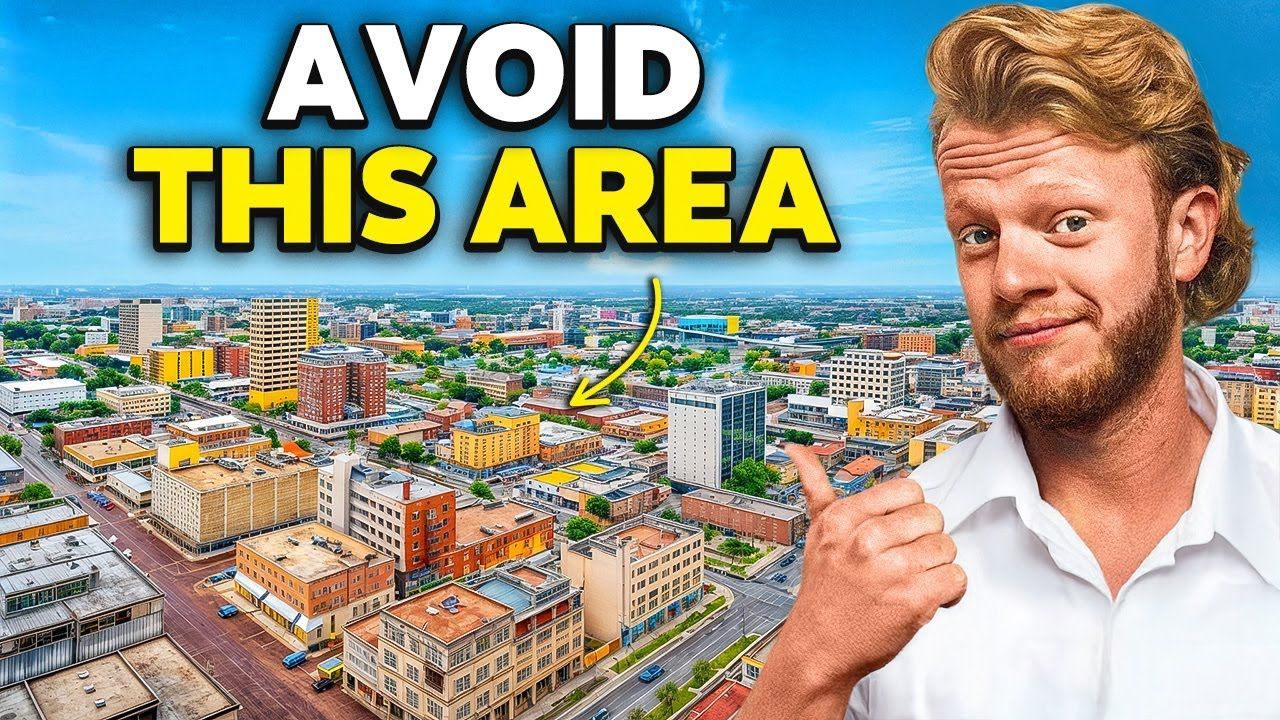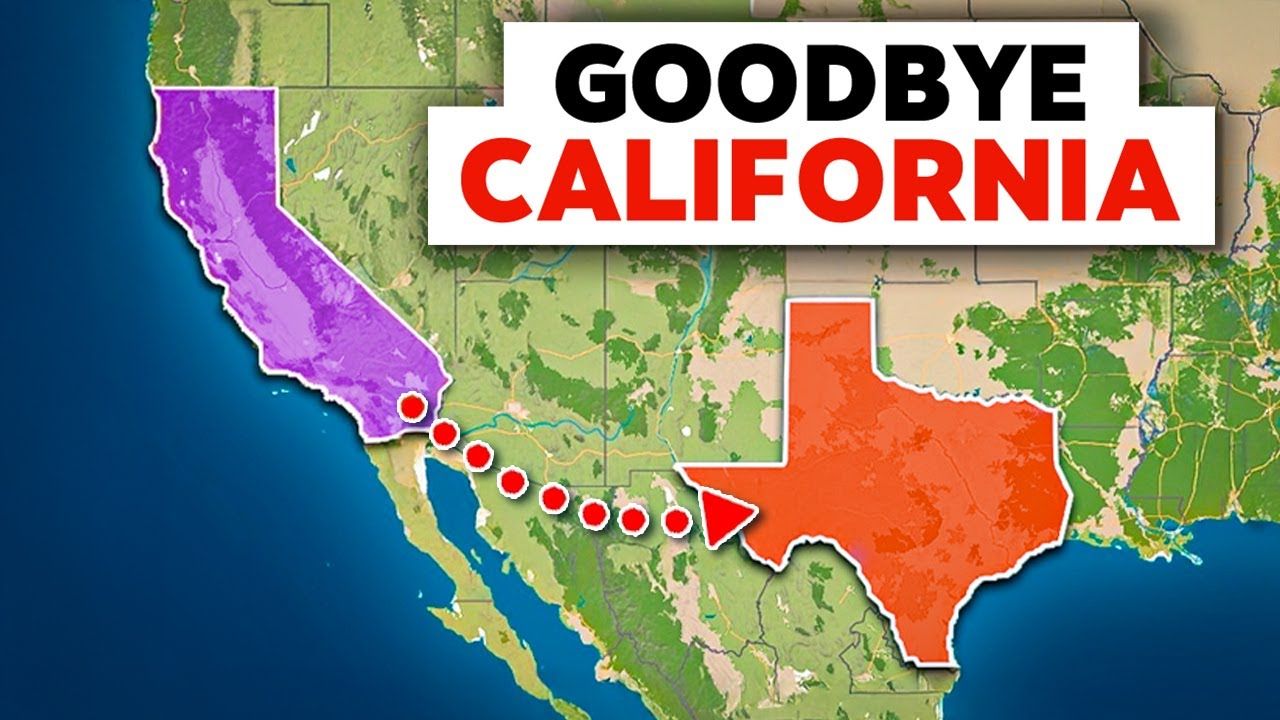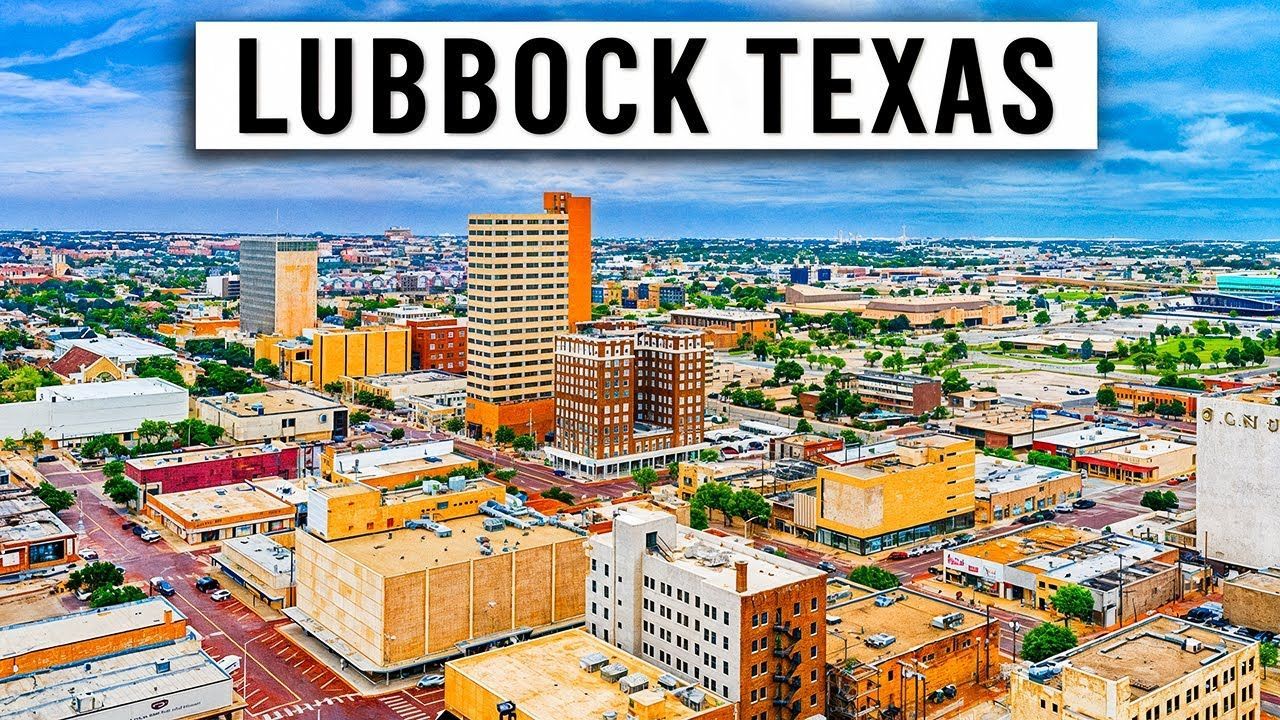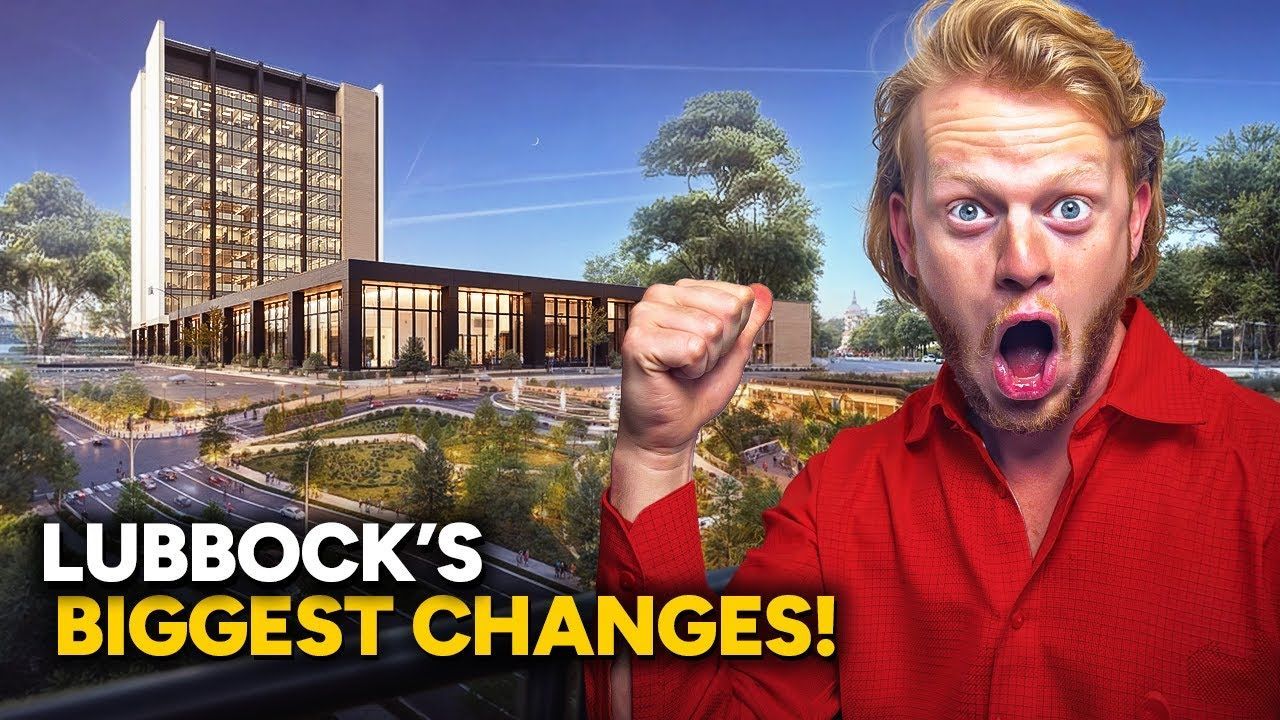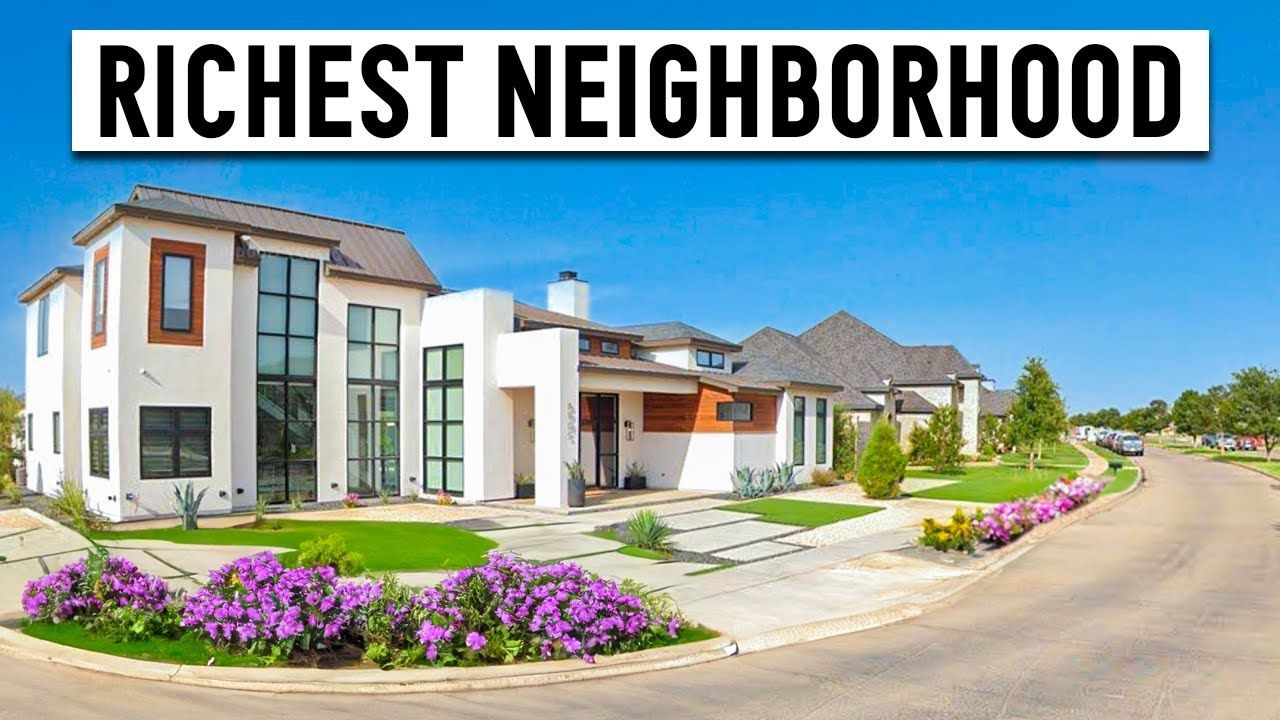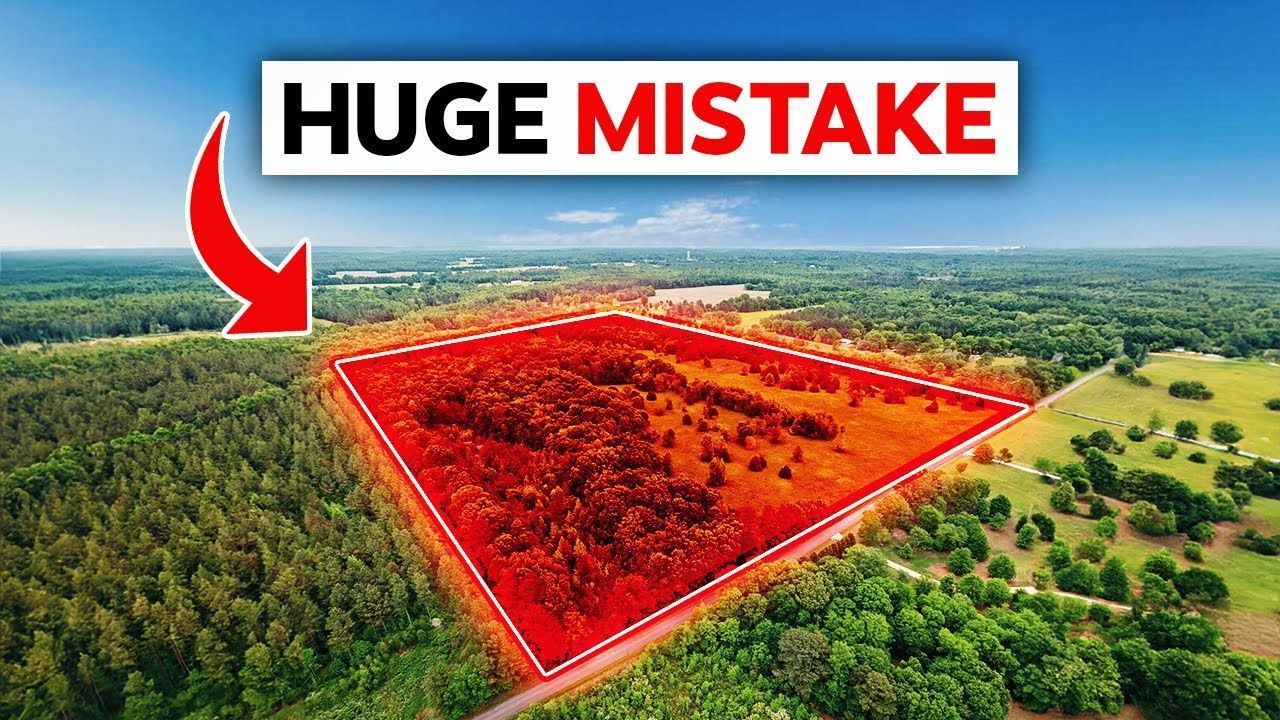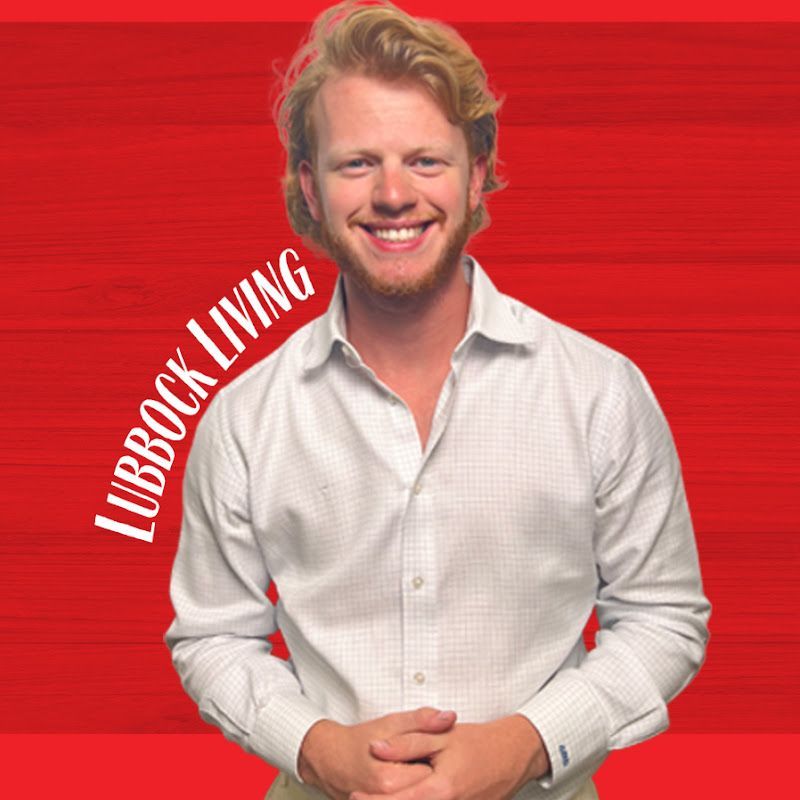Do NOT Move to the Wrong Area in Lubbock, TX
If you’re considering moving to Lubbock, TX, you’ve landed in the right place. I’m Andrew Baxter from Living in Lubbock Texas, and over years of guiding buyers, sellers, and newcomers, I’ve learned that one of the biggest pitfalls people face is not understanding the city layout — and then picking the wrong neighborhood. This article breaks down Lubbock visually and practically: how the grid works, where the new development is happening, what each major area offers, and where I recommend you look depending on your budget and lifestyle. If you're moving to Lubbock, TX, this is the map-first, neighborhood-by-neighborhood walkthrough you need.
Table of Contents
- Why Understanding Lubbock’s Layout Matters When Moving to Lubbock, TX
- How Lubbock is Laid Out: The Loop, Grid System, and Major Streets
- The New Lubbock Loop Expansion: What It Means for Growth
- Breaking Lubbock Into Four Practical Zones
- Central Lubbock: Texas Tech, Hospitals, and Dense Amenities
- South & Southwest Lubbock: Cooper ISD, New Builds, and Price Diversity
- Wolfforth and Southwest Suburbs: Preston Manor, Friendship Hs, and Booming Growth
- West Lubbock: Retail Hubs, Older Houses, and Affordability
- North Lubbock and Shallowater: Quieter Life and Quick Access
- East Lubbock: Opportunity, Flavor, and Reality Checks
- Schools, Taxes, and Other Practical Factors When Moving to Lubbock, TX
- Price Bands and Where to Look if You’re Moving to Lubbock, TX
- Common Mistakes People Make When Moving to Lubbock, TX
- How I Help People Moving to Lubbock, TX
- Real Examples: Neighborhood Snapshots
- Signs a Neighborhood Will Appreciate (What to Watch for)
- FAQs About Moving to Lubbock, TX
- Wrapping Up: Make Your Move With a Plan
Why understanding Lubbock’s layout matters when moving to Lubbock, TX
Moving to Lubbock, TX isn't just about finding a house — it’s about finding the right neighborhood for your daily life. Commute times, school districts, nearby amenities, taxes, and long-term resale value all hinge on location. Over and over, I’ve seen clients who loved a home on paper but regretted the neighborhood once they moved. My goal is to give you a street-level mental map before you tour any properties.
Download my FREE Relocation Guide
How Lubbock is laid out: the loop, grid system, and major streets
First things first: Lubbock is built around a loop — Highway 289 — that many locals refer to simply as “the loop.” The loop is the major circumferential route that makes traveling from one side of town to the other fast and predictable. When people ask, "Do you live inside the loop or outside the loop?" it’s a quick shorthand for proximity to central Lubbock (and Texas Tech University).
The city also follows a fairly strict grid system: numbered streets run east-west and increase as you go south; avenues run alphabetically east-west in parts. Major north-south corridors (University, Indiana, Quaker, Slide, Frankford, Milwaukee, and Wolfforth Road) slice the city into predictable zones that make navigation and neighborhood identification simple — once you know them.
Why the loop matters for daily life
Using the loop, you can typically get from one side of town to the other in about 15–20 minutes depending on traffic. For example, a drive from Kelsey Park (south of the loop) will take you roughly 8 minutes to get onto the loop, then another 10–15 minutes to the opposite side. That efficiency shapes where development goes: commercial centers, hospitals, and shopping often cluster along or near loop access points.
The new Lubbock loop expansion: what it means for growth
There’s a major infrastructure project underway: an extension of the new loop that will connect areas from near Slaton through Woodrow up and around. Builders and city planners expect this to be transformative for growth. While the full buildout could take 10–20 years, construction is already moving quickly in many spots, and that investment is accelerating residential and commercial development — especially southwest toward Wolfforth and south toward Cooper ISD.
Where infrastructure goes, homes and businesses follow. If you’re moving to Lubbock, TX and you want future value appreciation, neighborhoods near the new loop expansion and its interchanges are worth watching closely.
Breaking Lubbock into four practical zones
For clarity, I like to think of Lubbock in four broad areas: North, South (including Southwest), East, and West — with a special central zone around Texas Tech University. Here’s a quick summary from my perspective:
- Central Lubbock — Texas Tech, medical district, and downtown-adjacent neighborhoods.
- North Lubbock — residential communities, golf courses, and access to Shallowater to the north.
- South & Southwest Lubbock — rapid new development, Cooper ISD neighborhoods, Wolfforth suburbs.
- West Lubbock — older neighborhoods, large retail hubs (Costco/West End), and the Reese Center area.
- East Lubbock — mixed-income neighborhoods, Prairie Dog Town, Buffalo Springs, Ransom Canyon on the outskirts.
Central Lubbock: Texas Tech, hospitals, and dense amenities
If you’re moving to Lubbock, TX and convenience is your priority, Central Lubbock is tough to beat. Texas Tech University is the anchor here. Around the campus you’ll find Tech Terrace and other established neighborhoods with lots of character and long-term demand.
Tech Terrace is popular with students, young professionals, and retirees who want a walkable vibe and architectural character. Prices vary dramatically inside Tech Terrace: closer to 19th Street you’ll find high-end homes that can reach into the high six figures, while southern portions may offer homes in the $175k–$350k range. If proximity to campus, theaters, restaurants, and hospitals matters, Central Lubbock is a core choice.
The medical district
Two major hospitals — Covenant and UMC — are clustered close to Texas Tech Parkway and the med school. The medical district is a big employment center, and it’s a magnet for travel nurses, medical residents, and healthcare professionals who want short commutes. If you’re moving to Lubbock, TX and you work in healthcare or nearby industries, living near the medical district makes everyday life simpler.
South & Southwest Lubbock: Cooper ISD, new builds, and price diversity
South and southwest Lubbock is where most of the new single-family development is happening. If you’re moving to Lubbock, TX and want new construction, larger yards, and rapidly improving commercial amenities, this is the place to consider.
Cooper School District — a major draw
98th Street roughly marks the Cooper ISD area, which includes many of the newest developments. Cooper ISD has been a huge pull for families. New elementary and high schools have been built to accommodate growth; that infrastructure investment improves neighborhood desirability and supports rising home values over time.
Neighborhoods to know in South/Southwest
- Fox Ridge — Great for buyers in the $225k–$350k range. Newer builds, nearby neighborhood market (Walmart Neighborhood Market), and family-friendly amenities.
- Bell Farms & Viridian — Betenbough developments; very affordable entry points with many homes in the $180k–$250k range. I’ve worked with buyers here frequently.
- Vintage — Established master-planned community offering a mix of older and newer homes and local retail.
- Kelsey Park — Higher-end development with homes generally $400k–$1M; restaurants and future retail are still coming online.
Pro tip: if you’re moving to Lubbock, TX and you want newer construction on a budget, search neighborhoods built within the last 5–15 years in the Cooper/82nd corridor. Builders like Betenbough still offer competitive pricing in some pockets — contact a local agent to explore builder incentives.
Wolfforth and Southwest suburbs: Preston Manor, Friendship HS, and booming growth
Wolfforth is technically its own city but functions as an extended southwest Lubbock suburb. Because of its strong growth and schools (including Friendship High), Wolfforth has become a focal point of residential expansion.
Preston Manor is widely seen as Wolfforth’s crown jewel — close to parks, new neighborhoods, and high-demand school zones. Around Preston Manor you’ll find a mix of price points: entry-level $250k–$300k homes as well as more expensive custom builds near parks. If you’re moving to Lubbock, TX and you want a family-oriented suburb with new amenities and community identity, look at Wolfforth developments.
West Lubbock: retail hubs, older houses, and affordability
The west side of Lubbock — near the Costco, West End retail center, and the Reese Center — tends to offer older houses and a lot of affordability. It’s a great option if you want lower purchase prices but access to established retail and grocery options.
Typical price ranges in west neighborhoods can start under $150k for older homes and move into the $200k–$300k band for renovated or newer subdivisions. Neighborhoods like Willow Bend (built 2016–2019) offer modern homes and strong rental demand, which I personally invest in.
North Lubbock and Shallowater: quieter life and quick access
North Lubbock includes long-standing neighborhoods and golf course communities (Shadow Hills). You’ll also find apartment and duplex concentrations that cater to students and young professionals. Heading further north, Shallowater and areas near 84th Avenue become attractive for buyers wanting a quieter, small-town feel while keeping a 10–15 minute drive into central Lubbock.
If you’re moving to Lubbock, TX and want a compromise between small-town quiet and city proximity, Shallowater and north Lubbock offer that balance.
East Lubbock: opportunity, flavor, and reality checks
East Lubbock is often discussed with mixed emotions. There are pockets with higher crime rates historically, but there’s also genuine opportunity and unique character. Areas like Prairie Dog Town offer very different geography — hills, open green space, and a local vibe that you won’t find in other parts of town.
Some buyers are wary to move to East Lubbock, and that’s understandable. I always recommend looking at specific blocks, crime data, and recent investment patterns instead of rejecting an entire quadrant. In many cases, people flip houses here and improve pockets rapidly. If you’re moving to Lubbock, TX on a tight budget and are willing to be strategic, East Lubbock can present strong value and future upside.
Outlying favorites: Buffalo Springs Lake, Ransom Canyon, and Roosevelt
For folks who want water, trees, and acreage, the options are often outside Lubbock proper: Buffalo Springs Lake, Ransom Canyon, and Buffalo Springs/Red Rock/area lakes. These spots offer a different lifestyle — more land, more privacy — and attract people moving to Lubbock, TX who prioritize outdoor living.
Keep in mind: sustainably available water and lake access can be limited, so if being near water is a must, plan accordingly.
Schools, taxes, and other practical factors when moving to Lubbock, TX
School districts matter. Inside the loop, property taxes are often better and homes can be more affordable depending on the neighborhood. Cooper ISD is a big draw in south Lubbock and has influenced a lot of development. Wolfforth has strong local schools in its own jurisdiction. Always check the school boundaries at the time you’re buying — boundaries can shift with new growth.
Other practical considerations:
- Commute: The loop makes cross-town commutes predictable — usually 15–20 minutes one side to the other.
- Traffic: Lubbock is still relatively low-traffic compared to larger metros, even as development accelerates.
- Infrastructure: The city is investing heavily — new hospitals, retail corridors, and street improvements help future-proof neighborhoods.
- Builder choice: Local builders like Betenbough have significant footprints in new subdivisions. If you plan to buy new, consider builder relationships and incentives.
Price bands and where to look if you’re moving to Lubbock, TX
Here’s a quick guide to where you’ll find houses by price band — useful if you want to narrow your search fast.
- Under $200k: West and some pockets north and east — older homes, duplexes, entry-level neighborhoods.
- $200k–$350k: The bread-and-butter zone: North Lubbock, many south Cooper neighborhoods (Fox Ridge, Viridian), Willow Bend, and suburban pockets.
- $350k–$600k: Newer sections of Cooper, Kelsey Park outskirts, higher-end subdivisions in Wolfforth and parts of West Lubbock.
- $600k+: Prime Tech Terrace lots, gated or estate lots near vintage neighborhoods and select Wolfforth/Sedona-type communities with acreage.
Common mistakes people make when moving to Lubbock, TX
- Choosing a house based purely on price without researching the surrounding neighborhood blocks, schools, and future development plans.
- Ignoring major commute corridors and how often you’ll cross the loop for work or school.
- Underestimating the difference a few blocks can make — Tech Terrace is a prime example where value swings drastically within short distances.
- Not considering long-term infrastructure plans, like the new loop and new commercial nodes, which can change a neighborhood’s trajectory.
How I help people moving to Lubbock, TX
I specialize in helping YouTube viewers, out-of-state movers, and local buyers find the right neighborhood. I’ll walk you through commute scenarios, school zones, taxes, and long-term resale potential. My team includes an expert on the phones (Joseph), who helps coordinate showings and answer initial questions. If you want someone who knows the city edge-to-edge and will match neighborhoods to your lifestyle and budget, reach out.
Real examples: neighborhood snapshots
Below are some quick snapshots I often use with clients when they ask for specific recommendations based on budget and lifestyle.
- Young professional, wants walkability/near campus: Tech Terrace or near central Lubbock (expect variable pricing).
- Young family, budget $225k–$350k: Fox Ridge, Bell Farms, Viridian, Willow Bend.
- Family wanting new construction and top schools: Cooper ISD corridor, subdivisions near 98th and Wolfforth.
- Investor or rental buyer: North and West Lubbock duplexes and single-family homes offer consistent demand.
- Buyers wanting acreage or lake access: Ransom Canyon, Buffalo Springs Lake, or rural parcels south of the city.
Signs a neighborhood will appreciate (what to watch for)
When evaluating an area, watch for:
- New infrastructure projects (road expansions, new loop interchanges).
- New schools being built — that attracts families and supports long-term demand.
- New hospitals and medical centers — employment drives local housing demand rapidly.
- Retail nodes and grocery stores opening — daily convenience matters.
- Consistent builder activity — indicates developer confidence in the neighborhood.
FAQs About Moving to Lubbock, TX
Where should I look if I'm moving to Lubbock, TX with kids?
Focus on Cooper ISD (south) and Wolfforth-adjacent neighborhoods. Check current school boundaries and visit the campuses. Neighborhoods like Fox Ridge, Viridian, and parts of Vintage are family-oriented and near new schools.
Is east Lubbock a bad area to move to?
East Lubbock has mixed pockets. Yes, certain areas have higher crime historically, but many blocks are improving and offer affordability. Don’t generalize the entire quadrant — evaluate specific streets, recent renovations, and community investment.
How long will the new loop take to complete and should that affect my buying decision?
The loop expansion is a long-term project (10–20 years for full buildout). However, active construction and early interchanges already influence where developers and retailers invest. If you’re buying for long-term appreciation, areas near planned interchanges are smart to monitor.
What neighborhoods are best for first-time buyers moving to Lubbock, TX?
Bell Farms, Viridian, Willow Bend, and certain North/West Lubbock pockets offer good entry points. Duplexes in north Lubbock are also a rental-friendly option if you want investment flexibility.
Should I buy new construction or an older home?
It depends on your goals. New builds reduce immediate maintenance and are often in growth corridors; older homes can offer mature landscaping and lower prices but may require renovation. I help buyers weigh builder incentives versus renovation costs.
Wrapping up: Make your move with a plan
Moving to Lubbock, TX can be a joyful, financially sound decision — if you pick the right area for the right reasons. Know your commute tolerance, school priorities, and whether you want new construction or established character. Use the loop and major streets as your navigation anchors, and keep an eye on the south/southwest growth corridors if long-term appreciation matters to you.
Choosing the wrong area can cost you time, money, and daily satisfaction. If you want help mapping neighborhoods to your lifestyle and budget — or just want a trusted local to guide the search — my team and I are ready to help. Reach out anytime at 214-926-1236 and let’s make smart moves together!


